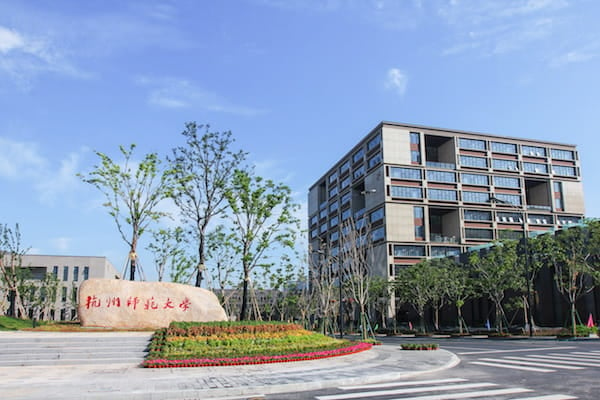Harbin Institute of Technology
 |
 |
 |
 |
Introduction to Harbin Institute of Technology
Harbin Institute of Technology (哈尔滨工业大学, website) is affiliated to the Ministry of Industry and Information Technology. It mainly focuses on science and technology, and has a multi-disciplinary coordinated development of science, art, literature, law, and art.
The Harbin Institute of Technology was founded in 1920, and was identified as one of the two model universities in the country to study foreign higher education in 1951. cradle. The school entered the first batch of key universities in the “211 Project” of the country in 1996, and was identified as one of the first 9 universities in the “985 Project” of the country. Harbin Institute of Technology was selected as a “double first-class” construction class A college in 2017.
The Harbin Institute of Technology covers a variety of disciplines such as science, engineering, management, literature, economics, law, and art. The school currently has 9 first-level disciplines of national key disciplines and 6 second-level disciplines of national key disciplines. In the third round of discipline evaluation by the Ministry of Education, the school ranked 10 first-level disciplines in the top five nationwide, of which the mechanics disciplines ranked first in the country. In the fourth round of national disciplinary evaluations, Harbin Institute of Technology ranked 17 disciplines in category A. The academic excellence rate (the ratio of category A disciplines to authorized disciplines) ranked sixth in the country and the number of category A disciplines ranked eighth in the country. The number of engineering class A ranked second in the country. Materials Science, Engineering, Physics, Chemistry, Computer Science, Environment and Ecology, Mathematics, Biology and Biochemistry, Agricultural Science, Clinical Medicine, Social Sciences. 11 disciplines have entered the top 1% of ESI global rankings. Materials Science has ranked among the top 1 ‰ in the world, and engineering disciplines have ranked among the top 10,000th in the ESI worldwide for many years in a row.
The university has 36 academicians (including 16 sharing academicians) in the two academicians, 9 national teaching teachers, 47 “Cheung Kong Scholars” specially-appointed professors, 10 young scholars, 52 National Outstanding Young Scientist Fund winners, and the National Natural Science Foundation of China. 45 outstanding youth fund winners of the National Committee of the Communist Party of China, 44 leading talents of the National “Ten Thousand Talents Plan”, 23 top talents of young people, 31 national candidates of the “Billion Talent Project”, 12 chief scientists of the “973 Plan”, and innovative talents There are 38 people in the promotion plan; there are 6 innovation groups of the National Natural Science Foundation of China, 12 science and technology innovation teams of the Ministry of Education, 5 innovation teams of key areas of the Ministry of Science and Technology, 6 national teaching teams, and 4 research-oriented teaching innovation teams of the Ministry of Industry and Information Technology.
Harbin Institute of Technology adheres to the school’s positioning of being based on aerospace, serving national defense, and facing the main battlefield of the national economy. It has founded the first aerospace college in China and launched the first small satellite independently developed by a college in China. Satellite-to-ground laser link communication, the first fully automatic laser beam-target coupling guidance (Shenguang-III shooting range optoelectronic and control system), the birth of China’s first computer capable of playing chess, the first new system radar, The first arc welding robot and spot welding robot, the first nano-satellite independently designed and controlled by college students, and the first college student robot dance team on the Spring Festival Gala stage, realized the first international high-orbit satellite-to-ground high-speed laser bidirectional The communication test broke through the key technology of the support structure system of the world’s largest caliber radio telescope, and supported the successful “open eye” of China’s “Sky Eye”. The successful development of a new generation of magnetically focused Hall electric thrusters Space applications revealed the structure of HIV virulence factors for the first time, putting China ’s AIDS structural biology research at the forefront of the world. The successful launch of “Longjiang II” became the world ’s first independently completed earth-moon transfer, near-month braking, and moon-circling The flying microsatellite, for the first time, revealed the structure of the human T cell receptor complex and made major original discoveries in the field of basic immune sciences. It is building China’s first large-scale scientific project for simulating extreme environments in space and participated in the lunar exploration project. Including 14 major national science and technology projects, the annual number of authorized patents, total scientific research funding, and the number of three national science and technology awards are among the highest in the country. Academician Liu Yongtan won the 2018 National Highest Science and Technology Award. Seven projects have been selected as Chinese universities for ten consecutive years. Great scientific and technological progress and a large number of achievements have helped the “Long March 7” and “Long March 5” rockets in their first flight, Tiangong 2 and Shenzhou 11 manned flights and other major missions. They have won the “China Manned Space Engineering Collaboration Contribution Award”. China Manned Space Engineering Outstanding Contribution Collective Award, “China Manned Space Engineering Outstanding Contributor Award” and many other awards It is becoming a famous university of science and technology and a famous aerospace school at home and abroad.
Teaching Program
![]() ISAC University Teaching Program
ISAC University Teaching Program
Related Universities




